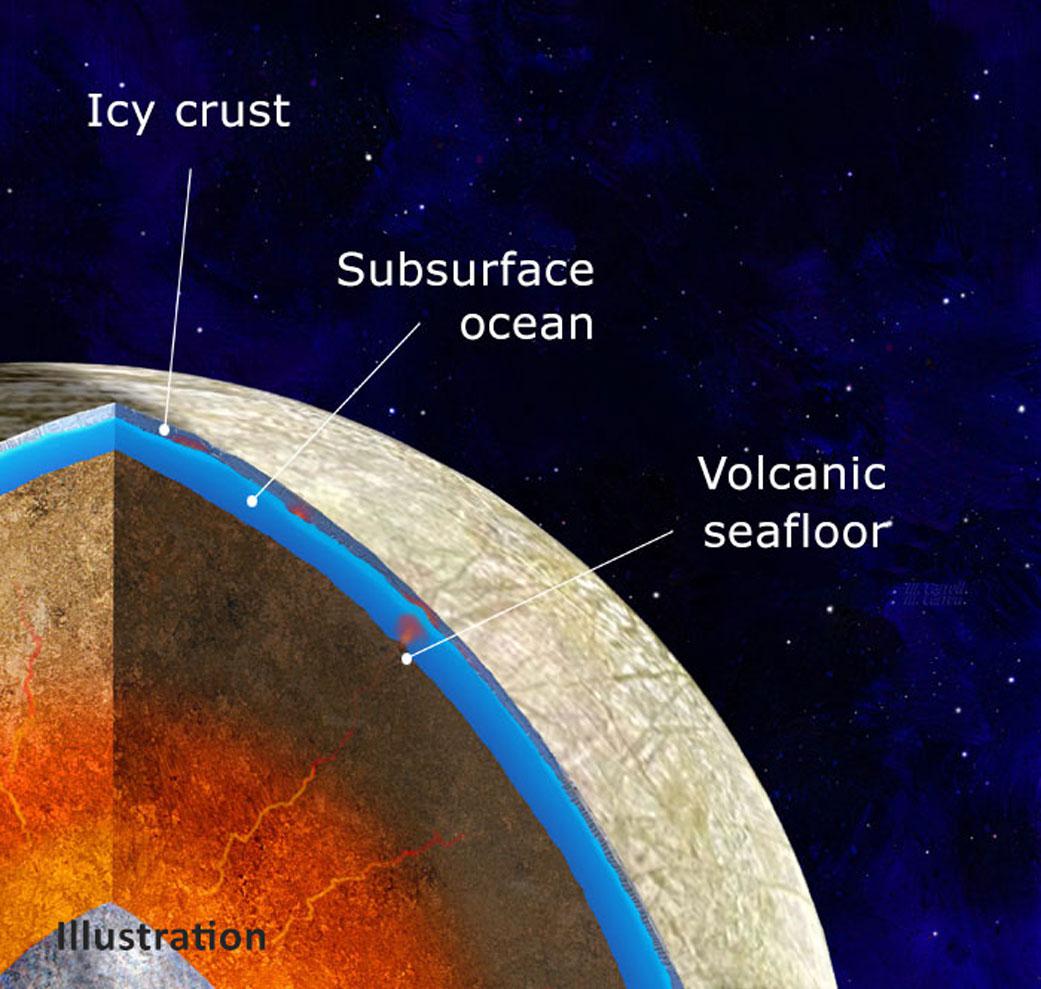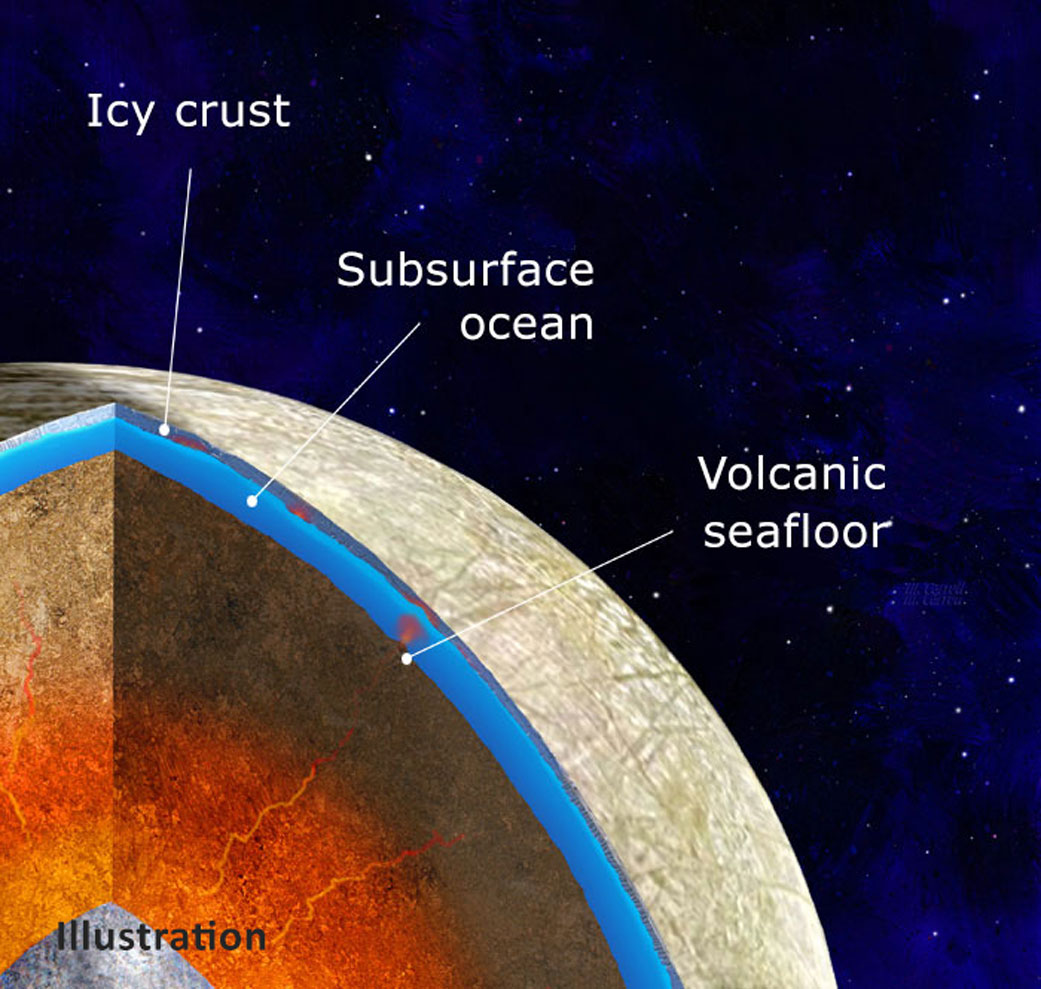At the bottom of the ocean Jupiterian satellite of Europe may be active volcanoes. This is stated in an article published in the recent issue of the journal Geophysical Research Letters. Scientists came to this conclusion during the analysis of a computer model, which was taken into account the gravitational interaction of the moon with Jupiter.
As we know, the surface of Europa is covered by a thick layer of ice. All the available evidence suggests that it hides a huge ocean, which contains more water than all the seas and oceans of the Earth put together. Not surprisingly, Europa is receiving increased attention in the scientific community. Astronomers are very interested in the characteristics of its hydrosphere and its suitability for life.

Apparently, the results of a new study will further fuel interest in this celestial body. Scientists have analyzed the effect of Jupiterian gravity on the satellite’s interior and concluded that the energy released by tidal interactions is enough to keep its mantle molten. And this greatly increases the likelihood that there are active volcanoes at the bottom of Europe’s ocean that regularly erupt. Something similar, only on a much larger scale, can be observed on Jupiter’s other satellite, Io. If the results of the study are true, it means that the hydrosphere of Europa has more favorable conditions for the formation and maintenance of life than previously thought.
Two robotic spacecraft (JUICE and Europa Clipper) will be launched to Jupiter in the coming years, and Europa will be one of their main targets. The data they collect should help scientists learn more about the satellite’s subglacial ocean and the processes taking place there.





